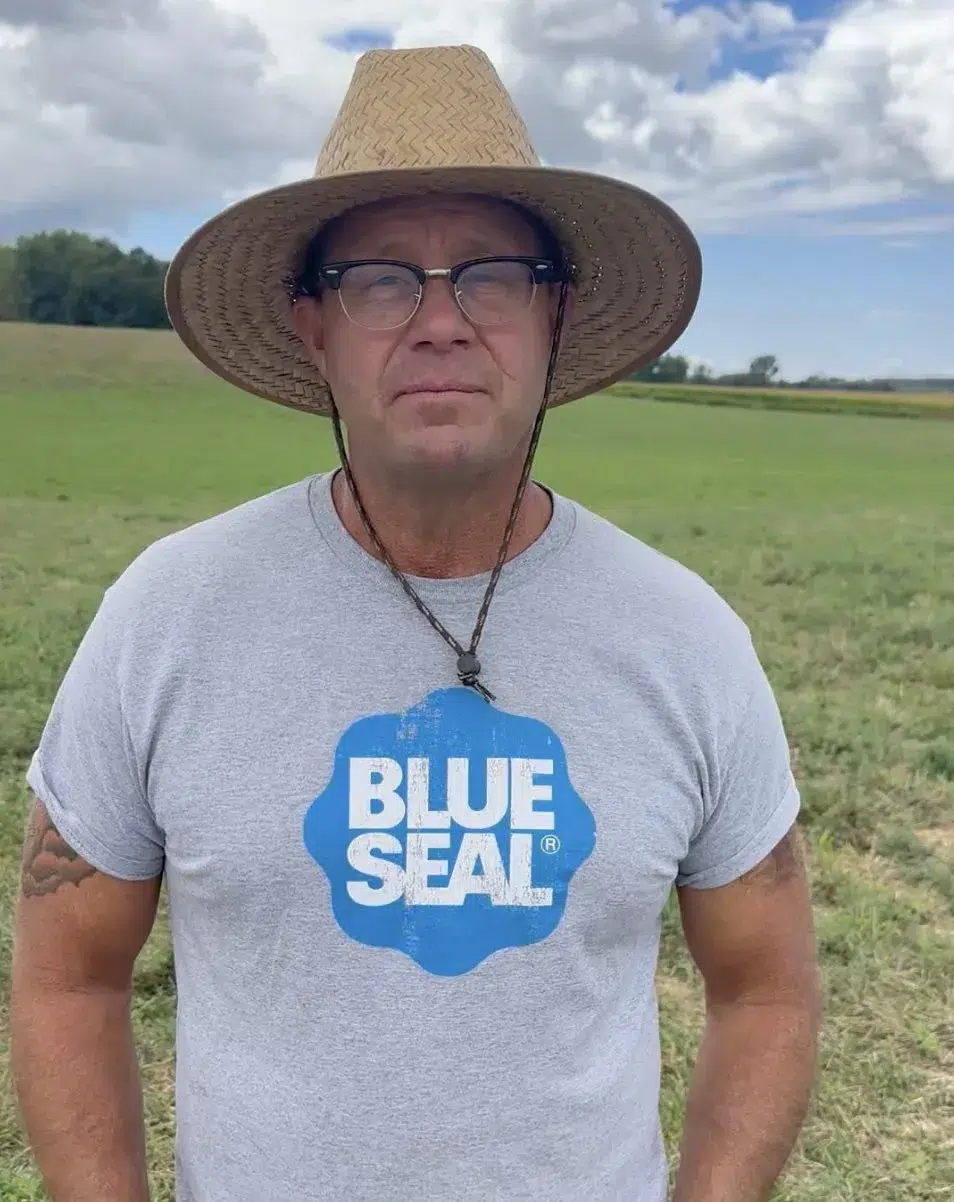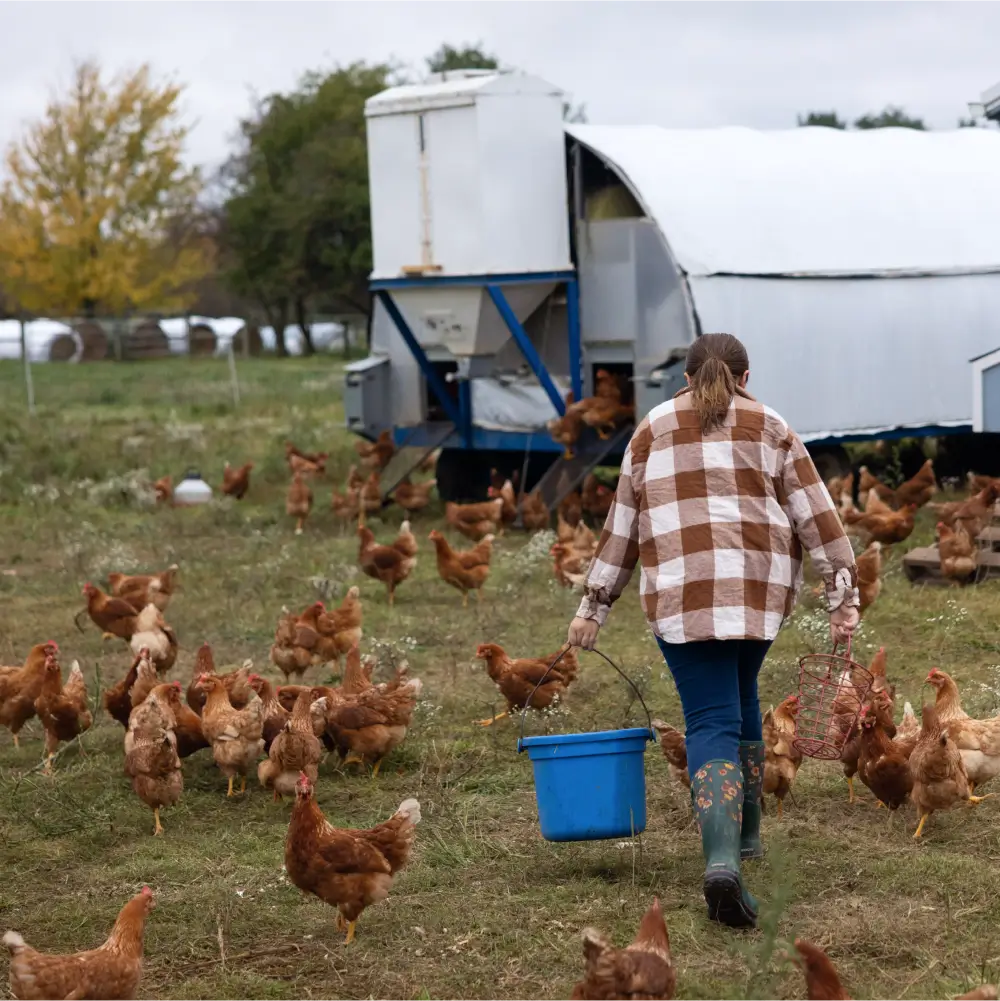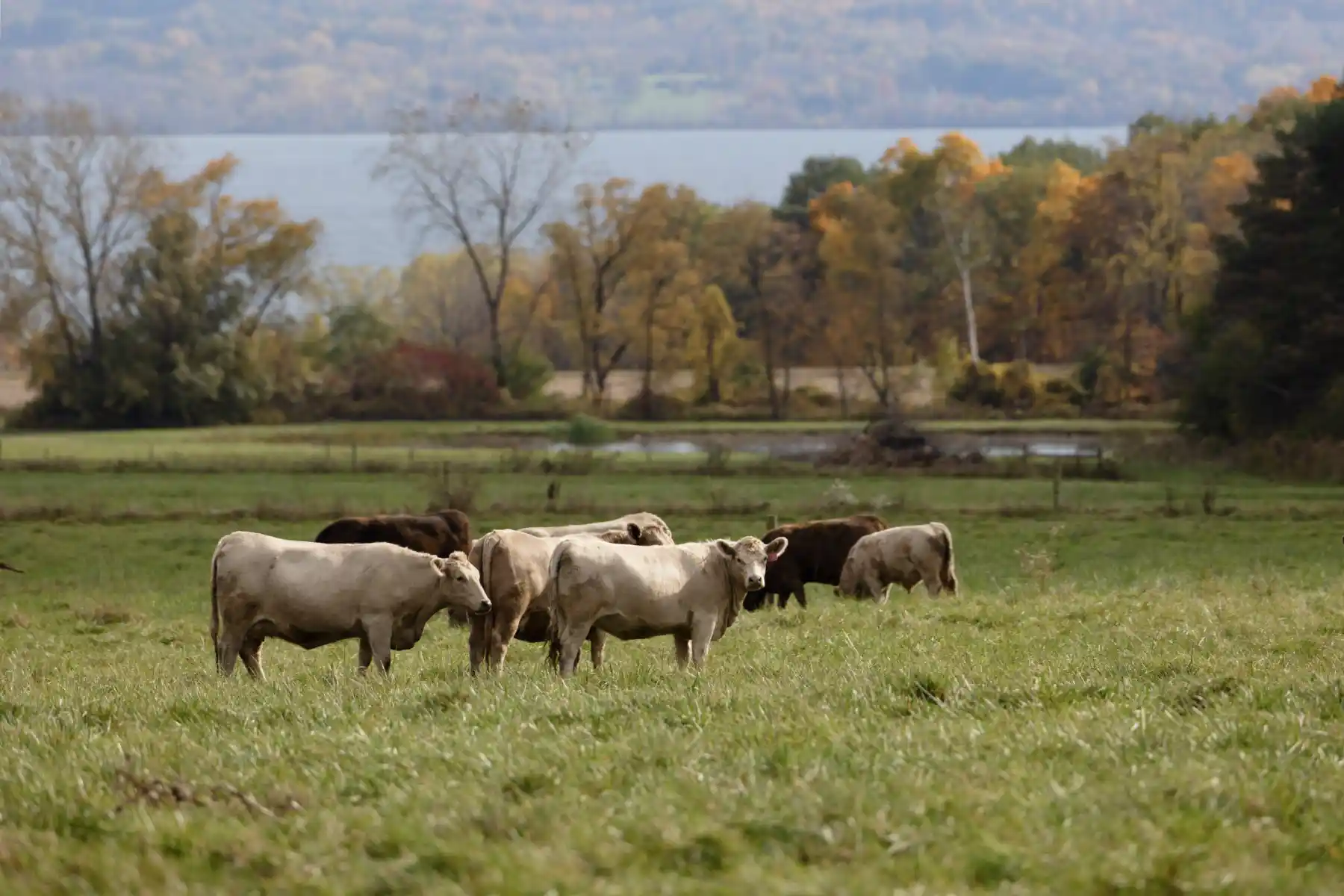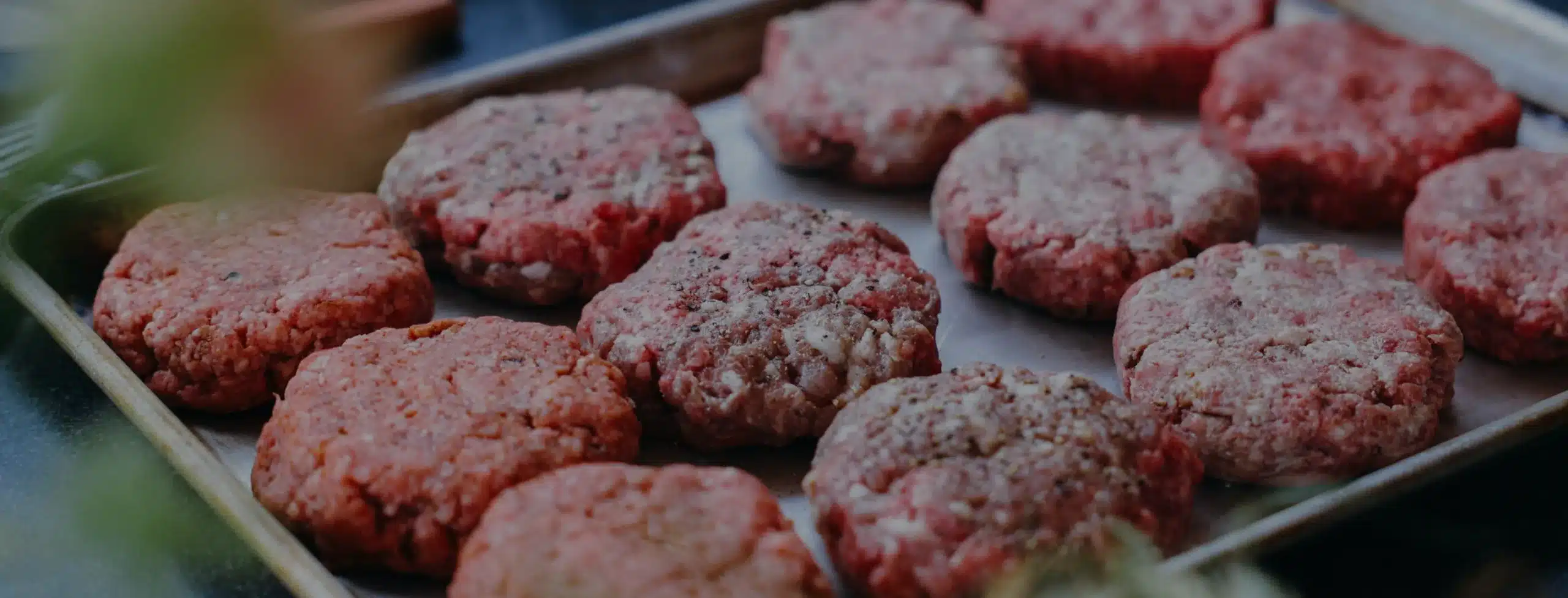Our Farmers & Suppliers
This is where the Walden Way begins.
Most meat companies don’t want you to know where your food comes from. We do. At Walden, we work with trusted regenerative farms across the East Coast – and we’re proud to show you the map.
Vermont High Pastures
Vermont High Pastures
Glacial soils. Great grass.
The high meadows of Vermont are famous for their dairy legacy, but today they’re also home to some of the Northeast’s best grass-fed beef and pasture-raised pork—raised slow, with the seasons.
Walden partners in this region:
- Rachel Orr – Orwell, VT
- Mitchell Harrness – Newbury, VT
River Valley Belt
River Valley Belt
A quiet abundance.
This river-carved region sits at the heart of New England farming—where small pastures, thoughtful practices, and a slower pace produce food with integrity.
Walden partners in this region:
- Anna Houston – Great Barrington, MA
- Morgan Hartman – MA
Finger Lakes Grazing Lands
Finger Lakes Grazing Lands
Rolling hills and limestone-rich soil.
With a long growing season and some of the best forage in the East, the Finger Lakes region is home to multigenerational farms committed to doing things right.
Walden partners in this region:
- Tim Haws – Romulus, NY
- Jacob King – Romulus, NY
- Garrett Miller – Interlaken, NY
- Justin Slothauer – Farmersville Station, NY
- Al Fargnoli – Apalachin, NY
- Ron Cieri & Jim Ingram – Delhi, NY
Mohawk Pasturelands
Mohawk Pasturelands
NY’s overlooked farming heartland.
Once the breadbasket of the Northeast, this stretch of upstate New York is quietly producing some of the region’s best pasture-raised meats. Its volcanic soils and low-density farmland are ideal for regenerative practices.
Walden partners in this region:
- Michael Stoltzfoos – Fort Plain, NY
- Amos Stoltzfus – Fort Plain, NY
- Carlyle Snyder – Little Falls, NY
- Santanna & Brian Fassett – Richfield Springs, NY
- James Weaver – Morrisville, NY
- Mark Nelson – Cooperstown, NY
- Megan & Rob Wilcox – West Edmeston, NY
Hudson Highlands
Hudson Highlands
Where the river feeds the soil.
With fertile fields stretching from the Hudson River to the hill towns, this region is home to a long tradition of small-scale, sustainable farming. Its deep soils and access to vibrant local food culture make it ideal for raising animals right.
Walden partners in this region:
- Kyle Dodge – Germantown, NY
- Jay Goldmark – Hudson, NY
- Leon Vehaba – Poughkeepsie, NY
- Michael Fisher – Sprakers, NY
- John Meulenberg – Schenevus, NY
Catskill Range
Catskill Range
Forest-fed, watershed-protected.
These farms lie within the Delaware River watershed—some of the cleanest, most tightly protected land in the Northeast. That means clean water, lush pasture, and a deep respect for the land.
Walden partners in this region:
- Norman Miller & David Allen – Newark Valley, NY
Garden State Grasslands
Garden State Grasslands
A hidden pocket of pasture.
Tucked into the ridges of northwest New Jersey, these farms are surrounded by suburbs—but still raise animals with old-school care on real grass.
Walden partners in this region:
- Bryce Cotton – Asbury, NJ
Blue Ridge Pastures
Blue Ridge Pastures
Where mountains meet meadow.
In the rolling hills of eastern North Carolina, pasture-based farming still runs deep. With long grazing seasons and rich forage, these farms are a natural fit for regenerative meat.
Walden partners in this region:
- Adam Grady – Kenansville, NC
- Ben Davis – Seven Springs, NC
Southern Roots
Southern Roots
Tradition, soil, and Southern sun.
From heritage breeds to warm-weather pasture management, this Georgia farm brings generations of knowledge to raising better beef, even in a changing climate
Walden partners in this region:
- Evans Hooks – Swainsboro, GA
Meet some of our incredible farm partners
We work with 50+ independent farms across the East Coast—here’s a look at some who bring the Walden Way to life.
Megan & Rob Wilcox
Edmeston, New York
Lifelong farmers raising beef, lamb, and poultry with rotational grazing and family-powered care on their multi-generational farm.
Mallory Mort
Ghent, New York
A longtime cattleman using regenerative grazing and natural practices to raise Angus beef with help from his vet-trained family.
Bruce Rivington
Hamilton, New York
A 45-year farmer focused on soil-first practices like no-till and pasture rotation—now running a family dairy and creamery.
Riley Harness
Newbury, Vermont
A first-generation farmer raising pasture-based pork and poultry with help from his family, composting, and rotational grazing.

Featured Partner
Keeping diversified farming alive
Up in Rodman, New York, Steven Winkler walks his pastures, and the pigs follow. They turn soil into life, sunlight into flavor, and care into something you can taste.
With his wife Lisa and son Peter at Lucki 7 Farm, Steven farms regeneratively, rotating hogs through open fields so they can root, graze, and fertilize as they go. Their natural movement keeps the land alive, building healthier soil and capturing carbon — all part of a diversified farm, which includes alfalfa, barley, high-quality grass-hay and grass-fed cattle. A tradition he’s passing on to the next generation.

The Walden Regenerative Standard
Regenerative Farming is the ability to regrow, renew, and restore the soil.
Regenerative Farming strengthens the land’s resilience to droughts and floods, keeps harmful chemicals out of our food system and leads to healthier pastures, healthier animals and more nutritious, flavorful meat.
In a Regenerative system, farmers work with nature rather than against it. Regenerative Farming looks different for every Walden farm or ranch, but is always rooted in the competencies of SOIL, STEWARDSHIP and SYSTEMS:
Soil
Know Your Place
We grow the kinds of crops and raise the kinds of animals that naturally do well in local climates and soils. What works on one farm might not work next door.
Disturb the Soil as Little as Possible
Digging and spraying chemicals break up soil life. We avoid plowing and farm chemicals wherever possible, and aim to quit them over time.
Keep the Soil Covered
Bare dirt bakes in the sun and washes away in rain. We keep plants, crop leftovers, or mulch on top to protect it—like a blanket for the ground.
Mix Things Up
Nature never grows one single crop by itself. We plant different kinds of crops together or in rotation to copy that natural mix.
Always Have Living Roots
We don’t leave fields empty. Living roots feed the microbes underground, hold the soil in place, and help water soak in.
Link Animals and Soil
Grazing animals add natural fertilizer and stir up plant growth. Healthy animals need healthy soil, and healthy soil needs animals.

Stewardship
Every Choice Counts
Each farm decision helps or hurts the land—and the effects spread across the whole farm.
Add Diversity
More kinds of plants and animals create richer soil life and store more carbon.
Plan for Change
We change up our planting and grazing schedule on purpose. This keeps the ecosystem lively instead of stuck in a rut.

Systems
Energy Flow
Sunlight fuels plants. When plants die or get eaten, their leftovers feed the soil—continuing the cycle of life.
Water Cycle
Rain and snow are precious. Good soil lets water soak in and stay put instead of running off.
Mineral & Nutrient Cycle
Minerals move from soil to plants, to animals, and back to soil through manure and decomposing plants. This loop also stores carbon.
Biodiversity
Over time, different plants, animals, and microbes appear or leave as conditions change. A healthy farm makes room for many kinds of life.

FAQS
Find quick answers to your questions about our share program, orders, and more. We’re here to help!
What is regenerative farming?
Regenerative Agriculture is the ability to regrow, renew, and restore the soil.
In a Regenerative system the farmer will focus on working with nature, and not against nature, to achieve agricultural goals. Regenerative Agriculture is a journey, not a destination, and will be ever-evolving for every Walden farm or ranch.
This is achieved by applying the Six Principles of Soil Health, the Three Rules of Adaptive Stewardship, and the Four Ecosystem Processes. The six principles, three rules, and four processes can be applied to every farm or ranch, regardless of region, climate, or soil type. Not all farms are the same, and decisions must be made according to the unique needs of each individual farm.
Six Principles of Soil Health:
- Know your Context – The local farm should raise/grow plants and animals that thrive in the local environment. What works on one farm may not work on another, even if they are neighbors!
- Minimal Soil Disturbance – Mechanical and/or Chemical disturbance does not occur in nature. The goal of the farm should be to immediately reduce, and eventually eliminate, dependence on man-made inputs and tillage.
- Cover and Build Surface Armor – Bare soil does not exist in nature, and that should be replicated on the farm. The surface of the soil should be kept covered, insulating the soil and protecting the biology below.
- Mix It Up – Nature does not grow monocultures nor should we.
- Keep Living Roots in the Soil – Land should never be left to lie fallow. Living roots feed soil microorganisms, protect soil structure, and improve water infiltration.
- Grow Healthy Animals and Soil Together – There is no substitute for the soil biology that results from grazing animals, and grazing animals depend on healthy soils.
Three Rules of Adaptive Stewardship
- Compounding – Decisions on the farm are never neutral – they will have either a positive or a negative effect, and those effects will ripple (compound) to every corner of the farm
- Diversity – Nature never supports a monoculture. Adding diverse plants and livestock yields improved soil biology and carbon sequestration
- Disruption – Ecosystems become stagnant when management practices become complacent. Planned purposeful disruption of the cropping schedule and the grazing plan is necessary to maintain the forward momentum of regrowing, renewing, and restoring the ecosystem
Four Ecosystem Processes
- Energy Flow – Solar energy flows unidirectionally from the sun to the earth (unlike the other ecosystem processes). Solar energy powers the plant-soil relationship, which is necessary for life itself. When plants die (or are consumed) their remains are recycled back into life again through soil biology, contributing to the other ecosystem processes.
- Water Cycle – Nature provides water via rain or snow, and we must steward the resource by managing the farm to increase water infiltration and retention.
- Mineral Cycle – In a properly functioning nutrient cycle, minerals travel from below the soil to above, through the plant and into the grazing animal, and from the animal back to the soil to feed the soil microbiome below the surface. Regenerative outcomes rely upon sequestering carbon, and carbon sequestration is not maximized without a functioning mineral cycle.
- Diversity – Also known as biological succession, it involves changes in, and the development of, all living things. It is best surmised by a quote from the Bruce Ward Legacy Trust, “A species will move into an environment when the conditions are suitable for its establishment and will move out of that environment when conditions become unsuitable for its reproduction.”
Why does it matter? Because industrial agriculture—the kind that churns out cheap meat by the ton—is destroying our soil, polluting waterways, and pumping out carbon emissions. Regenerative farming flips the script. It rebuilds the soil, nurtures biodiversity, and actively helps combat climate change.
Here’s the catch: It’s rare. Less than 1% of farms in the U.S. are truly regenerative. But at Walden, we’re doubling down. We partner exclusively with farmers committed to these practices and are working to make regenerative farming the rule, not the exception.
Better meat, better soil, better future. That’s regenerative farming. And we’re proud to be leading the charge.
The Walden Local Regenerative Agriculture Standards were written to coincide with the research and education performed by Understanding Ag, LLC. Learn more at understandingag.com.
Are you organic?
Not exactly—and we think that’s a good thing. Here’s why:
We go beyond organic in many ways. While organic certification might sound like the gold standard, it’s often out of reach for small-scale farmers. The certification process is expensive, time-consuming, and has been co-opted by factory farming giants who bend the rules to slap an organic label on products that don’t align with the spirit of sustainable farming.
At Walden, we trust our farmers to use common-sense practices to care for their animals and the land—because they’ve been doing it for generations. They pledge not to use antibiotics or animal byproducts in feed. They embrace rotational grazing, nurture healthy soil, and raise animals as nature intended. And we don’t just take their word for it. We regularly audit our farms to ensure they’re upholding the Walden Way—our own set of rigorous standards that prioritize animal welfare, environmental health, and superior meat quality.
Here’s the kicker: Much of the organic beef you see in grocery stores still comes from cows raised in feedlots, eating organic corn or grain. While that might meet the USDA’s requirements, it’s not even close to what we’d call natural or healthy. Cows are grazers, plain and simple. Grain—organic or not—throws their digestive systems out of whack and produces meat that’s lower in nutrients and packed with unhealthy fats.
Walden beef? It’s 100% grass-fed and finished. No corn, no soy, no grain of any kind—ever. The result is better meat: higher in Omega-3s, lower in saturated fat, and loaded with flavor that factory farms just can’t touch.
So no, we’re not “organic.” We’re something better. It’s farming done right.
What makes Walden different from grocery store meat?
Let’s start with the elephant (or maybe the factory-farmed cow) in the room: grocery store meat comes from a system built to cut costs at the expense of farmers, animals, the environment—and frankly, you. Most of it is raised on massive factory farms, shipped across the country (or the globe), and processed in giant facilities. Big Food works hard to obscure where your food comes from because they know if you saw the truth, you’d put that shrink-wrapped package back on the shelf.
At Walden, we’re rewriting the story. Here’s how:
- A Better System for Farmers: At the grocery store, only $0.15 of every dollar you spend goes back to the farmer. With Walden, it’s $0.55 or more. That means your dollars are directly supporting small-scale, independent farmers who use regenerative practices and care for their animals and the land the right way.
- Exceptional Quality: Factory farming churns out bland, mass-produced meat raised on grains, antibiotics, and stress. Walden meat is pasture-raised, nutrient-dense, and packed with flavor you can actually taste. We even offer unique heirloom cuts you won’t find in any supermarket. Think pork jowls, bavette steaks, or lamb shanks—the kind of cuts chefs love but grocery stores skip.
- Transparency: Every cut in your Walden share is traceable to the local farm it came from. No mystery labels, no middlemen. Just food you can trust.
- Convenience: Skip the crowded aisles and freezer-section guesswork. Walden delivers straight to your door, so you get premium, pasture-raised meat without the hassle of grocery shopping.
Factory farms might own the supermarket shelves, but they don’t own us. The Walden Way is better for farmers, better for animals, better for the planet, and better for you. Because you deserve more than industrialized meat— you deserve meat with integrity.
Is your packaging sustainable?
Absolutely—because better meat deserves better packaging.
We’re committed to minimizing waste and maximizing sustainability every step of the way. Your share arrives in a reusable cooler bag that you simply return to us on your next delivery—no bulky boxes or excessive materials headed to the landfill.
The meat inside is vacuum-sealed in durable, freezer-ready packaging to lock in freshness while reducing food waste. In order to reduce package breakage and food waste, some products are sealed in a plastic tray. And as for keeping everything frozen? We use dry ice, which naturally dissipates into the air—no messy gel packs to toss.
Sustainability is about more than what’s inside the bag. It’s baked into everything we do.
What makes your meat healthier?
It all starts with how our animals are raised. When you choose Walden meat, you’re getting food that’s not only rich in flavor but also packed with nutrients—and without the baggage of factory farming.
Take our 100% grass-fed and grass-finished beef as an example:
- More Omega-3s: Studies show that grass-fed beef contains significantly higher levels of heart-healthy Omega-3 fatty acids compared to grain-fed beef. These are the same “good fats” found in foods like salmon and walnuts. (Source: https://pubmed.ncbi.nlm.nih.gov/35267281/)
- Higher in CLA (Conjugated Linoleic Acid): Grass-fed beef has up to five times more CLA, a healthy fat linked to reduced inflammation and improved immune function. (Source: https://www.stonebarnscenter.org/wp-content/uploads/2017/10/Grassfed_Full_v2.pdf)
- More Vitamins: Grass-fed beef is naturally richer in Vitamin E and beta-carotene (a precursor to Vitamin A), both powerful antioxidants that help combat free radicals and support your immune system.
But it’s not just about the beef. Across the board, our meat is better for your health because it’s raised the way nature intended:
- No Animal Byproducts: Our animals are fed diets that are natural, clean, and wholesome—never animal byproducts. Industrial farms might cut corners by feeding animals ground-up waste from other animals, like blood and bone meal. Not here. Our livestock eat the way nature intended.
- No Antibiotics or Hormones: Industrial meat is often pumped full of antibiotics and growth hormones to make animals grow faster in stressful, unsanitary conditions. Not here. Our animals are pasture-raised and never treated with antibiotics or hormones, which means you’re not ingesting those, either.
And here’s the kicker: When animals are raised on grass, in open pastures, without shortcuts or chemical crutches, they’re healthier—and that health translates directly to you. With Walden, you’re not just feeding yourself or your family; you’re nourishing them with clean, nutrient-dense, responsibly raised food.
It’s better for the land, better for the animals, and better for you. That’s the Walden difference.
